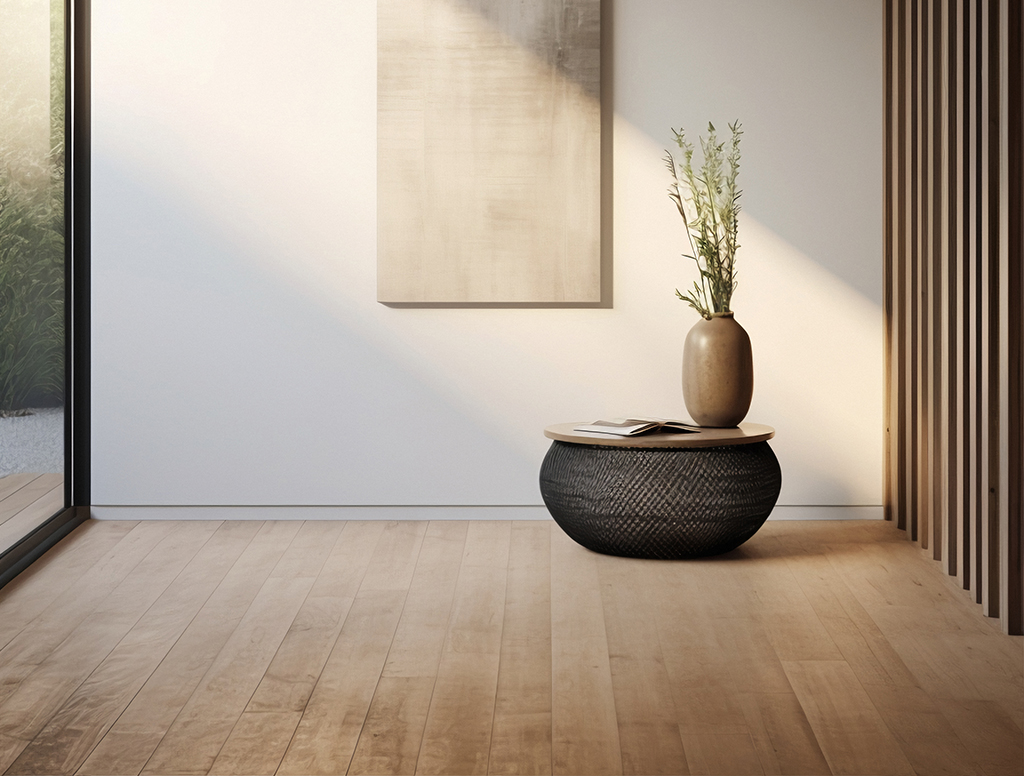As consumers grew more environmentally aware in recent years, they sought products that matched their eco-friendly lifestyles. Initially, eco-friendly flooring choices were scarce and often pricey, hindering widespread adoption. However, advancements in manufacturing techniques and rising market demand have led to a wider variety of sustainable flooring options at competitive prices.
Eco-friendly flooring goes beyond just using renewable materials; it also involves minimizing the environmental impact of production. This includes reducing water and energy consumption during manufacturing, decreasing emissions, and ensuring that old flooring can be recycled or biodegraded rather than being discarded in landfills.
The Essence of Eco-Friendly Flooring
Materials are the first step towards sustainable flooring. The cornerstone of eco-friendly flooring is the selection of low-impact materials, such as bamboo, recycled materials, and reclaimed wood. These materials lessen the need for new resources while simultaneously repurposing old materials, lessening commercial buildings’ environmental impact.

Sustainable flooring produces minimal emissions and can be recycled at the end of its lifecycle. Such flooring options reduce the environmental footprint and often come with health benefits for the home’s occupants by limiting exposure to harmful chemicals. Here are some key considerations for selecting eco-friendly materials:
Renewable and Natural Materials: Choose materials that can be quickly grown and replenished from natural, renewable resources. Models incorporate bamboo, stoppers, and particular kinds of wood.
Recycled or Reclaimed Materials: Reduce waste and the need for new products by using recycled and repurposed materials.
Low Environmental Impact: Select materials with a short life cycle and minimal environmental impact during production. This includes low energy production, carbon emissions, water usage, and waste generation.
Non-toxic and Low VOC Emissions: Choose materials that do not emit harmful volatile organic compounds (VOCs) into the air, as they can harm human health and indoor air quality. The beneficial effects of sustainable flooring on indoor air quality are noteworthy but sometimes disregarded.
Durability and Longevity: To reduce the need for frequent replacements and waste generation, choose long-lasting and durable materials.
Responsible and Ethical Manufacturing: Verify if the supplier or manufacturer uses sustainable practices, like minimizing waste, employing renewable energy, and maintaining ethical labor standards.
Top Sustainable Flooring Choices
Bamboo: Many people praise bamboo as one of the greenest flooring options. It grows incredibly quickly; some species can reach adulthood in as little as three to five years. Bamboo is a renewable resource because of its toughness and quick pace of development. Additionally, bamboo floors can equal the elegance of classic hardwood floors due to their durability and style.

Cork: Cork flooring is notable for its sustainability as it is derived from the bark of cork oak trees. Because the bark comes back and the extraction technique doesn’t damage the tree, it’s a renewable resource. In addition to being environmentally beneficial, cork floors provide a distinctive look to homes, are cozy underfoot, and have sound-proofing properties.
Linoleum: Natural ingredients like linseed oil, pine resin, and cork dust are used to make linoleum, as opposed to vinyl, which is a synthetic product. It is biodegradable and, with careful care, can survive for many years. Contemporary linoleum is also available in a multitude of eye-catching hues and designs.

